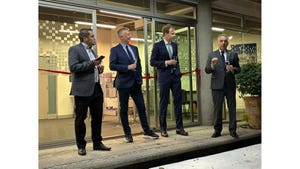Upgrading to Intranet-Based, Real-Time Inventory System
September 17, 2015

A leading specialty retailer’s method of reordering was based on the mass balance of incoming shipments versus production – or how much bulk flour was ordered versus how many 50-lb bags of dry mix was produced. This method worked well for the customer in the past, as the mix department manager was responsible for all facets of the production inventory. Their considerable experience allowed them to anticipate peak demand and slowdowns.
Due to a surge in growth, the company’s raw material demand began to exceed the historical trends. Larger volume purchases required purchasing and logistics personnel to become more directly involved in the procurement of raw materials. The production schedule changed from a 5-day, 40-hour week to a 7-day, 168-hour week. Amidst the chaotic change in demand, the company’s accounting procedures become more stringent.
Initial contact was made with the customer through the Maintenance and Operations departments for a level system. Overfilled silos were causing plugged bag filters and conveying lines, creating loss of product. Maintenance was also being called upon to repair the delivery system when, in fact, material had run out and there was nothing to convey.
ROI was developed based on plant production interruptions and maintenance downtime due to overfills. Runouts were occurring typically once a week where the plant line was idle one to three hours until more material was trucked in. Limited operation could continue using bags, but at a higher cost. Handling bags was more labor intensive, not as fast and raw material costs were higher. Bagged flour is more expensive than bulk flour and has additional costs of storage and bag disposal.
Due to the company’s manual system of accounting for inventory, the likelihood of errors was high and required time to rectify discrepancies. The customer needed accountability: Purchasing needed to be able tie the ordering, receiving, and production processes together with accurate data; Manufacturing and Distribution needed accurate inventory data for production usage and validation. As important as not running out of material was, the customer also relayed the importance of not have excess material in order to maintain lean manufacturing.
Application
Inventory monitoring at this dry mix plant required continuous weighing for 17 existing inventory silos with pipe leg supports. Existing loads were 100,000 lb minimum per silo with greater than 5000 psi per leg. The receiving area (non-wash down), cleaning is limited to sweeping and vacuuming.
Materials used are flour, sugar, and dextrose from a variety of suppliers. The company purchases more than two million pounds of flour per week, which is delivered via bulk truck daily from mills. It is necessary to use multiple mills in the area due to the various grades and types of material needed to meet their demanding requirements.
olution
Kistler-Morse completed an initial needs assessment and found that the plant needed reliable inventory information for:
• Production availability and reporting
• Material reordering
• To direct the filling and emptying of the inventory silos
• Daily business and month-end financials
Kistler-Morse installed two Microcell bolt-on sensors per leg on each silo with the requirement of +/-3% weight indication. The display used in this application was the MVS multi-vessel system controller.
The Microcells and MVS provided current information but would still require manual logging of the data and this data was only available at the local controller. Kistler-Morse provided an ORB inventory management system to give the plant access to real-time inventory information on all silos via the plant’s intranet. This information was available via Excel or SQL data inquiries to anyone given access privileges by the plant on their intranet.
Benefits
Historical and trending data was available electronically, allowing them to track not only when new material was received, but to which vessel it was delivered to as well. This provides immediate inventory updates. With more accurate and real-time inventory data, overfills are eliminated. This results in better resource allocation in maintenance and repairs, as well as reduced product spoilage.
When placing an order, Purchasing and Logistics were able to predict, due to more accurate historical trending, when storage space would be available which creates a more efficient purchasing and logistics process.
A smooth, orderly flow of truck deliveries is accomplished solving shipping/receiving disruptions and congestion.
With electronically accurate information, daily and monthly reporting to the financial community is more reliable.
For more information on Kistler-Morse, Spartanburg, SC, call 800-426-9010 or visit www.kistlermorse.com.
For related articles, news, and equipment reviews, visit our Instrumentation & Control Equipment Zone
Click here for a List of Instrumentation & Control Equipment Manufacturers
Click here for information about the upcoming Powder & Bulk Solids Texas Conference/Exhibition
You May Also Like


